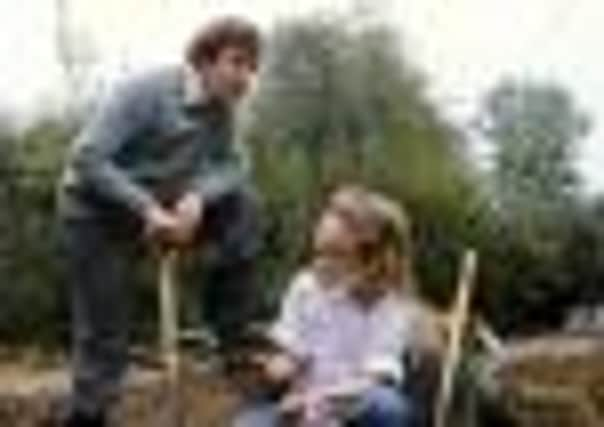Good Life beckons for model village’s residents


But now its residents are set to become the latest claimants of the Good Life.
Researchers at the University of York’s Stockholm Environment Institute, (SEI), in partnership with the Joseph Rowntree Foundation, are encouraging residents to embrace an alternative lifestyle.
Advertisement
Hide AdAdvertisement
Hide AdThey have launched an ambitious project to persuade householders in philanthropist Joseph Rowntree’s model village to get the most out of life at a time of rising cost of food, fuel and energy.
The New Earswick Good Life project will run over the next year and will help residents find intelligent ways to make the most of the people, places and resources around them.
Working in collaboration with teams of local residents, the scheme will provide a series of challenges and events that cover the themes of home, living environment and wellbeing.
It is designed to help residents make the most of their home, community and environment and to find and enjoy local produce, travel in cheaper, healthier ways and use energy more efficiently.
Advertisement
Hide AdAdvertisement
Hide AdThe village was created in 1902 a year after Joseph Rowntree’s son Seebohm published his book Poverty: a study of town life – a study of the living conditions of the working classes in York.
This showed the terrible living conditions in the area.
Residents had to cope with unsanitary housing as well as dark, overcrowded living conditions.
Joseph Rowntree, Snr, was anxious to prove that it must be possible to provide better housing for people on low incomes.
He bought 150 acres of land near the village of Earswick, two-and-a -half miles to the north of the centre of York.
Advertisement
Hide AdAdvertisement
Hide AdHis idea was that employees of his York cocoa factory should live in quality housing in pleasant surroundings – be they workers or managers.
And it was an egalitarian idea – the houses were made available to any working people, not just Rowntree employees.
The first houses in the village were built on Western Terrace and Poplar Grove.
But, needless to say, given the temperance era, a public house was not part of the plan.
Advertisement
Hide AdAdvertisement
Hide AdJoseph Rowntree said: “I do not want to establish communities bearing the stamp of charity but rather of rightly-ordered and self-governing communities.”
The first 28 houses were built between 1902 and 1904 by the architect Raymond Unwin.
The Joseph Rowntree Village Trust was then established to continue building and manage the new village.
In due time other facilities followed – local shops, a village school, a bus service, a railway station, and most importantly of all a community centre, named The Folk Hall, which was seen as essential to sustaining a lively community.
Advertisement
Hide AdAdvertisement
Hide AdEven now after all these years, the Folk Hall is still the focus of village life.
It is the hub for the meetings of numerous clubs and societies, including the York & District Budgie Society, York Bridge Club, and the York Coronary Support Group.
Dr Gary Haq, SEI researcher and coordinator of the initiative, said: “The Good Life Initiative is about providing new skills, sharing information and utilising local knowledge to make the most of the resources we have available to us and allow us to builder stronger more resilient local communities.
“It will connect local residents with the people and skills needed to live a healthier, happier, handier life in New Earswick.
Advertisement
Hide AdAdvertisement
Hide Ad“It will help residents meet the challenges in the economy, society and the environment that we face today. “
He added: “It seeks to find ways to maintain and improve quality of life in increasing economic and environmental challenging conditions.”
The Initiative will start tomorrow when residents will be invited to take Tea on the Green from 10am-4pm and enjoy the music of a brass band.
This will be followed by an official launch on Wednesday, July 20, at the New Earswick Folk Hall from 7pm-9 pm.
TV show that become cultural icon
Advertisement
Hide AdAdvertisement
Hide AdThe 1970s Good Life TV series has become part of the nation’s fabric.
For anyone interested in understanding the country’s funny bone it is a must visit.
The plot is simple enough. On his 40th birthday Tom Good decides that he’s had enough of the rat race and he and his wife Barbara will become self-sufficient.
The couple convert their garden into a farm, get in the pigs and chickens, grow their own crops and on one memorable occasion, try to dye their own wool with nettles.
Their struggles are wonderfully contrasted with the couple next door Tom and Barbara the henpecked Jerry Leadbetter and wife Margot, a social climber.